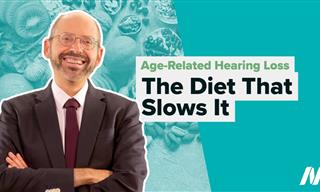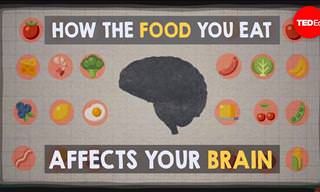
In the ever-evolving realm of psychological disorders, Avoidant Restrictive Food Intake Disorder (ARFID) has emerged as a puzzling newcomer in recent years. Once lumped under the broad label of "Selective Eating Disorder," ARFID distinguishes itself from more widely recognized conditions like anorexia by avoiding any emotional entanglement with body image or fears of becoming overweight.
Diagnosing ARFID
The Diagnostic and Statistical Manual of Mental Disorders, Fifth Edition (DSM-5), serves as the cornerstone for identifying ARFID. According to this clinical bible, the condition manifests as an eating or feeding disturbance that results in persistent failure to meet appropriate nutritional and energy needs. This disturbance is associated with one or more of the following: significant weight loss, nutritional deficiency, dependence on enteral feeding (tube feeding) or oral supplements, and a marked interference with psychosocial functioning.

Critically, the diagnosis of ARFID dismisses conditions where the symptoms are better explained by lack of available food or culturally sanctioned practices. It also excludes the presence of anorexia nervosa, bulimia nervosa, or any other medical or mental conditions that could potentially cause the symptoms. In essence, ARFID stands as a unique eating disturbance requiring its own set of diagnostic considerations and interventions.
Risk Factors:
While our understanding of ARFID is still burgeoning, several risk factors have been identified. Individuals with autism spectrum conditions, Attention Deficit Hyperactivity Disorder (ADHD), and intellectual disabilities are more susceptible to developing ARFID. In addition, children who exhibit severe or enduring picky eating behaviors appear more likely to transition into ARFID as they age. Anxiety disorders frequently accompany ARFID, often further complicating the diagnostic and treatment landscape.
It's important to underscore that risk factors can vary substantially between individuals. This means that two people with ARFID might have vastly different experiences, perspectives, and symptoms—a reflection of the complex interplay between biological, psychological, and sociocultural elements.

Warning Signs and Symptoms:
The symptoms of ARFID are as diverse as they are concerning. On the surface, dramatic weight loss and gastrointestinal issues may serve as the most visible indicators. However, closer examination reveals an array of other signs such as food texture aversions, fears of choking or vomiting, and a narrowing range of accepted foods over time.
Psychological symptoms, including lack of interest in food and non-specific complaints around mealtime, are common. Notably, there is no body-image disturbance or fears of weight gain—symptoms often associated with other eating disorders—further underscoring the unique nature of ARFID.
The Way Forward: A Daunting Reality and Gaps in Understanding
ARFID is more than just an intriguing psychological curiosity; it poses severe and life-threatening health risks. Due to insufficient nutrient intake, the body goes into an energy-conservation mode, leading to a range of dire consequences of electrolyte imbalances to cardiac arrest.
Despite the depth of our current understanding, numerous gaps remain. The etiology and long-term impacts of ARFID are yet to be fully understood, and the quest for effective treatment options is ongoing. These lingering questions underscore the imperative for continued research and clinical focus.
 9:19
9:19
Parenting Tips: How to Put a 2 Year Old to Bed
This video tutorial offers practical solutions tailored for your 2 year old's bedtime.

Should Children Have Caffeine? Here's Our Complete Answer
This article asks: should kids have caffeine, and how much is too much?

These Tips Can Help Your Kid Develop Healthy Eating Habits
We all want our children to eat right from an early age, and with the help of this clinical dietitian, you can make that happen...
 4:02
4:02
This Diet Slows Down Hearing Loss
Certain diets can preserve and maintain good hearing while slowing hear loss.

Have Picky Eaters at Home? Learn 10 Tips for Dealing
Many children are picky about food. The following tips will help you deal with the problem correctly, making mealtime more enjoyable and healthy.

Guide: What to Feed a Baby at Every Age
Not all solid foods are suitable for every stage, which is why we have created a guide to help you feed your baby according to their age.

If You Want to Live Longer... Bend Over More Often!
Add more years to your life by doing this one, simple exercise every day.
 16:04
16:04
Transform Your Health with These Amazing Neck Techniques
These neck drills won't just relieve your neck discomfort, but will also treat a variety of neurological problems.
 23:47
23:47
Start Using Yoga For Neck & Shoulder Pain Relief
If you are suffering from a lot of knots and tightness in your neck and shoulder muscles, then give these yoga stretches a try.
 9:44
9:44
Every Senior Must Do These Simple Seated Exercises
Seniors will find this video extremely helpful.
 2:02
2:02
5 Common Myths About Sugar We Must Stop Believing
In this video, we discover the truth behind 5 of the most common myths about sugar.
 4:52
4:52
Got a Stiff Neck? Give This 90-Second Treatment a Shot!
If you ever wake up and find that you have a stiff neck, this 90-second technique will help relieve it in no time at all.
 3:18
3:18
This is the Most Effective Way to Remove Ear Wax at Home
Remove earwax at home with this effective hack.
 6:22
6:22
The 10 Most Effective Exercises for Neck Pain Relief
Get quick relief from a stiff neck with these easy stretches.
 12:34
12:34
Simple Tips for Giving Your Brain a Well-Deserved Rest
In this video, you'll find valuable tips for giving your brain the respite it needs from the never-ending stress of daily life.
 11:53
11:53
The 6 Best Artery-Cleansing Vitamins and Supplements
These vitamins and supplements will help keep your arteries clean.
 4:46
4:46
What You Should & Shouldn't Eat With a Stomach Ache
Not sure what you should and shouldn't eat with an upset stomach? This video has all the answers!

Are You at Risk for "Building Sickness"?
Have you heard of "building sickness"? Because you may have had it.
 11:45
11:45
What Happens When You Quit Sugar? You'll Be Surprised!
What happens to your body when you quit sugar? Find out!

Say Goodbye to Your Double Chin with These 5 Exercises
These 5 exercises will help give your chin a tighter, younger, and healthier look, and eventually to help you get rid of a double chin all together.
 5:04
5:04
Important: The Dangers of Mixing Drugs Explained
What happens when we mix these drugs? Find out in this informative video.
 6:20
6:20
Is Breakfast REALLY the Most Important Meal?
Breakfast is the most important meal of the day - truth or myth? Watch to find out what happens to your body when you stop eating breakfast for two weeks.

Warning: The Places Bacteria Hides...
The truth about hand washing and the spread of bacteria. This could keep you healthy longer!
 6:32
6:32
Unusual Signs of Vitamin B3 Deficiency You Mustn't Ignore
You may not realize you have Vitamin B3 deficiency!

9 Ways You Can Treat Fungal Infections at Home
If you suffer from some of these symptoms, there are a number of home remedies that can easily treat fungal infections.
 1:55
1:55
3 One Minute Tricks to Fix Your Nightmare Back Pains
Do you have back pain as a result of prolonged sitting? Here are 3 easy techniques you can try anywhere.
 4:27
4:27
Alzheimer's And Meat Eating: Addressing the Connection
Does eating a lot of meat have a connection to Alzheimer's? We examine the evidence.

9 Effective Ways to Make Your Nausea Go Away
Nausea is that unpleasant feeling of discomfort inside your stomach, oftentimes leading to vomiting. Use one of these natural methods to stop it.

Don’t Believe These Lies: 12 Popular Egg Myths Busted
For the sake of french toast and sunny side up eggs for breakfast, we decided to bust 12 harmful and simply untrue beliefs about eggs
 6:19
6:19
Is Your Keyboard Hurting Your Wrists? Here’s How to Fix It
Did you know that your keyboard can damage your wrists? This video shows how to use it safely and 3 exercises that to counteract the damage

If You Eat These 9 Fish Regularly, You Should Stop!
We are always told how fish is healthy, but there are actually some types of fish that'll do more harm than good. Here are nine of them!

Having Leg Cramps at Night? Then You Need to Know This
Night leg cramps beyond annoying: they can interfere with sleep and life quality. Here's everything you need to know about night leg cramps.
 5:58
5:58
The Amazing Anti-Diabetic Tea You Never Knew About
Looking for a natural way to lower your blood sugar levels? Try this wonderful tea recipe.
 10:38
10:38
Prevent Alzheimer’s by Using These Expert Techniques
Listen to this expert's views on techniques that the elderly can use to enhance their brain's health.
 5:45
5:45
Memory Not Working? The Answer May Be Hiding in Your Sleep
If you want to remember better, this lecture will tell you - The answer is in your sleep.
 4:53
4:53
You Are What You Eat: How Foods You Eat Affect Your Mood
In recent years we discovered how incredibly important a good diet is in preventing neurodegenerative diseases. Here's how it works.
 17:25
17:25
Chair Yoga: a Complete At Home Video Practice
This is a complete 17-minute beginner friendly yoga sequence suitable for all ages you can do on your chair.

Did This Technique Just Kill 99% of Cancer Cells?
This revolutionary method, employing the power of vibrating molecules, heralds a new dawn in the fight against cancer, offering hope for a more efficient and less invasive approach to treatment.

For Great Health, Add Goji Berries to Your Shopping List!
From fighting aging to a super-charged immune system, this miracle fruit carries with it so many health benefits it should be in everyone's shopping cart.
 9:57
9:57
The Shocking Truth About Eggs and Heart Disease
What exactly do eggs do to our arteries? Find out the truth.
 4:16
4:16
Feeling Bloated? This Is How to Improve Digestion Quickly
How can you improve your digestion quickly? This guide explains.
 8:56
8:56
Struggling With Obesity? These Exercises Can Help a Lot
Struggling with obesity? Doing these exercises can change your life for the better.

Soothe Your Sciatic Pain with These 8 Natural Remedies
You don’t need to suffer from pain caused by sciatica. These 8 remedies are natural and effective at reducing unnecessary pain.
 3:07
3:07
If You're Not Using Sunscreen, After This Video You Will
This fantastic video shows you how your skin looks in UV light, revealing future sun-damage to it.

Breakthrough: Lion's Mane Mushrooms Boost Memory & Nerves!
Researchers have recently uncovered the mushroom's potent compounds, particularly hericene A, that could help nerve cells grow and better interact with each other.
 4:46
4:46
How to Get Rid of Eye Floaters: Natural Remedies
A doctor explains how to get rid of eye floaters.

9 Common Mistakes We Make When Giving First Aid
The 9 most common errors made when providing first aid for simple medical cases.


